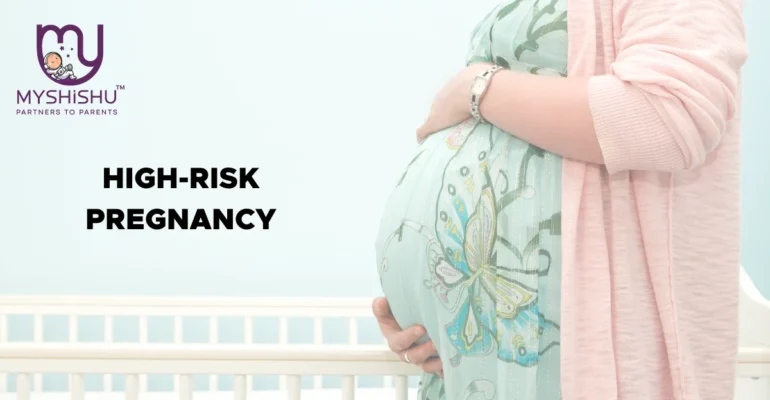High-Risk Pregnancy: A Comprehensive Guide
High-Risk Pregnancy: A Comprehensive Guide
Introduction
In the intricate tapestry of pregnancy, the term high-risk pregnancy echoes with a nuanced resonance, casting a spotlight on the extraordinary journeys of mothers-to-be facing unique challenges. Navigating the uncharted waters of high-risk pregnancies requires not just medical acumen but a compassionate understanding of the emotional and physical complexities intertwined with this maternal expedition. In this comprehensive guide, we embark on an exploration of the unseen realities, triumphs, and resilience that define the landscape of high-risk pregnancies. Together, we’ll unravel the layers of this intricate journey, empowering expectant mothers with knowledge, support, and an unwavering belief in the possibility of a positive outcome.
Know what to expect at High-Risk Pregnancy
Embarking on the high-risk pregnancy journey parallels setting sail on uncharted waters, familiar yet fraught with unique challenges. This chapter unravels the intricacies:
1.1 Understanding High-Risk Pregnancies
Dive into the spectrum of factors contributing to high-risk pregnancy, from maternal age to pre-existing medical conditions. Knowledge becomes the compass guiding expectant mothers through the complexities.
1.2 The Emotional Landscape
Beyond clinical definitions, explore the emotional weight high-risk pregnancies carry. This section delves into the psychological nuances, offering insights and coping mechanisms for the rollercoaster of feelings.
1.3 Navigating Medical Terrain
High-risk pregnancies redefine routine prenatal care. Learn about specialized tests, frequent check-ups, and proactive medical interventions that transform uncertainty into managed care.
1.4 Building a Support System
No journey is solo, especially in high-risk pregnancy. Discover the importance of a robust support system—healthcare professionals, family, and friends—fostering open communication, shared decision-making, and strength through a network that understands and supports unique challenges.
This chapter sets the stage, equipping expectant mothers with awareness, resilience, and the assurance that they are not alone in their high-risk pregnancy journey. Each step, though challenging, brings them closer to the ultimate destination—the birth of a healthy, happy baby.
Unveiling the Specific Risk Factors
As we embark on a deeper understanding of high-risk pregnancy, it’s crucial to dissect the specific risk factors that cast a shadow on this unique journey. Each factor contributes its own set of challenges, demanding specialized attention and care to ensure a positive outcome.
2.1 Advanced Maternal Age: The Balancing Act of Youth and Maturity
Maternal age, a cornerstone in the risk factor landscape, poses challenges for both younger and older mothers. We delve into the distinct considerations each age group faces, exploring the heightened risks and proactive measures needed for a healthy pregnancy.
2.2 Pre-existing Medical Conditions: Navigating the Undercurrents
Certain medical conditions existing before conception add complexity to the maternal journey. From diabetes and hypertension to autoimmune disorders, we unravel how these conditions amplify risks and necessitate vigilant management throughout pregnancy.
2.3 Previous Pregnancy Complications: Shadows of the Past
The echoes of past pregnancy complications can reverberate into subsequent pregnancies. We explore the specific risks associated with a history of complications, emphasizing the importance of tailored care plans to mitigate the chances of recurrence and ensure a smoother journey.
2.4 Lifestyle Factors: The Ripple Effect on Pregnancy
The choices made in daily life have a substantial impact on pregnancy outcomes. This section dissects how factors like nutrition, exercise, and stress management contribute to the risk landscape, empowering mothers to make informed choices that mitigate potential risks and foster a healthier gestation.
2.5 Multiple Pregnancies: Navigating the Complexity of Twins and More
Expecting more than one baby introduces a unique set of challenges. We unravel the specific risks associated with multiple pregnancies, providing insights into the additional monitoring and care required to safeguard the well-being of both mother and baby.
Cultivating a Healthy Pregnancy
As we navigate the terrain of high-risk pregnancies, proactive measures and a holistic approach become indispensable in fostering a positive outcome. This chapter explores the crucial steps to promote a healthy pregnancy, empowering expectant mothers to navigate this extraordinary journey with resilience and well-informed choices.
3.1 Prenatal Care: The Cornerstone of a Healthy Beginning
Regular and comprehensive prenatal care is the bedrock of a healthy pregnancy, especially in high-risk scenarios. We delve into the importance of early and consistent check-ups, specialized tests, and the collaborative relationship between expectant mothers and healthcare providers to monitor and manage potential risks.
3.2 Nutrition: Nourishing Both Mother and Baby
Nutrition takes center stage in promoting a healthy pregnancy. This section outlines the essential nutrients, dietary guidelines, and the impact of a well-balanced diet on maternal and fetal well-being. Empowering mothers with knowledge about nutritional requirements becomes a key tool in mitigating certain risk factors.
3.3 Exercise and Physical Activity: Balancing Movement and Rest
Maintaining a healthy level of physical activity is vital for both the physical and mental well-being of expectant mothers. We explore safe and beneficial exercises, emphasizing the importance of striking a balance between movement and rest to support a healthy pregnancy.
3.4 Stress Management: Nurturing Emotional Well-Being
The emotional landscape plays a crucial role in high-risk pregnancies. This section provides strategies for effective stress management, acknowledging the impact of mental health on the overall well-being of both mother and baby. From mindfulness practices to seeking support, managing stress becomes an integral part of the journey.
3.5 Education and Empowerment: Knowledge as a Catalyst
Arming expectant mothers with knowledge is a potent catalyst for a healthy pregnancy. This section explores the importance of prenatal education, empowering women with the information they need to actively participate in their care, make informed decisions, and navigate the complexities with confidence.
In the realm of high-risk pregnancy, specialized tests play a pivotal role in monitoring and managing potential complications. This chapter delves into the necessity and significance of various tests, empowering expectant mothers with the knowledge to make informed decisions for a comprehensive and proactive approach.
Navigating specialized testing
4.1 Early Pregnancy Tests: Setting the Foundation
Early in the pregnancy journey, certain tests lay the foundation for proactive care. We explore the significance of early prenatal screenings, genetic testing, and other diagnostic measures that provide crucial insights into potential risk factors.
4.2 Advanced Imaging Techniques: Visualizing the Journey
As the pregnancy progresses, advanced imaging techniques become essential for a detailed assessment of fetal development. From ultrasound scans to more specialized imaging, we unravel the importance of these tests in tracking the baby’s growth and identifying any anomalies.
4.3 Genetic Counseling: Decoding Inherited Risk
For pregnancies with a heightened genetic risk, genetic counseling becomes a valuable resource. We explore the role of genetic testing, its implications, and the support offered through counseling, allowing expectant parents to make informed decisions about their pregnancy journey.
4.4 Monitoring Maternal Health: Proactive Measures
Regular monitoring of maternal health is crucial in high-risk pregnancy. This section outlines tests such as blood pressure monitoring, glucose tolerance tests, and other assessments that contribute to the overall well-being of the expectant mother.
4.5 Fetal Monitoring: Ensuring Well-Being
Continuous monitoring of fetal well-being is paramount in high-risk scenarios. We delve into tests such as non-stress tests and biophysical profiles, providing insights into how these assessments offer a real-time understanding of the baby’s health and guide further management.
Understanding the need for specialized tests is instrumental in navigating the complexities of high-risk pregnancy. This chapter equips expectant mothers with knowledge about the various tests available, their purposes, and the proactive role they play in ensuring the health and well-being of both mother and baby.
High-Risk Pregnancy Symptoms
- Unusual Vaginal Bleeding
- Persistent Abdominal Changes
- Changes In Fetal Movement
- Severe Headache and Visual Disturbances
- Sudden Swelling
Recognizing Symptoms and Essential Knowledge in High-Risk Pregnancy
Understanding the symptoms associated with high-risk pregnancy is paramount for expectant mothers and their healthcare teams. This chapter explores the signs that warrant attention, shedding light on essential knowledge that contributes to early detection and effective management.
6.1 Unusual Vaginal Bleeding: Navigating the Red Flags
Any form of vaginal bleeding during pregnancy requires careful attention. We delve into the various causes, from implantation bleeding to more serious concerns, empowering expectant mothers to distinguish between normal changes and potential signs of complications.
6.2 Persistent Abdominal Pain: Decoding Discomfort
Abdominal pain can be indicative of various issues in pregnancy. This section explores the different types of pain, from normal stretching sensations to more concerning cramps, offering insights into when discomfort should be a cause for concern and prompt medical evaluation.
6.3 Changes in Fetal Movement: Monitoring a Baby’s Well-Being
Fetal movement serves as a crucial indicator of the baby’s well-being. We discuss the significance of monitoring these movements, providing expectant mothers with a guide to understanding what is considered normal and when variations may signal a need for further investigation.
6.4 Severe Headaches and Visual Disturbances: Recognizing Warning Signs
Headaches and visual disturbances can be symptoms of conditions such as preeclampsia. We explore the importance of recognizing these warning signs, their potential implications, and the necessity of prompt medical intervention to safeguard both maternal and fetal health.
6.5 Sudden Swelling: Managing Edema
While mild swelling is common in pregnancy, sudden or severe swelling, particularly in the hands and face, may indicate underlying concerns. This section provides insights into managing edema, understanding when it becomes a cause for concern and the importance of communicating these changes to healthcare providers.
By familiarizing expectant mothers with these symptoms, this chapter aims to facilitate early detection and proactive management of high-risk pregnancies. Knowledge about these warning signs becomes a powerful tool, enabling women to communicate effectively with their healthcare teams and ensuring timely interventions for a healthier pregnancy journey.
Conclusion
In closing, this guide has illuminated the complexities of high-risk pregnancy, offering insights into risk factors, symptoms, proactive steps, and considerations beyond the medical realm. As expectant mothers embark on this unique journey, may they find strength in knowledge, build robust support systems, and prioritize their well-being. Each high-risk pregnancy is a story of resilience, and by navigating the complexities with understanding and empathy, we contribute to a narrative of hope and new beginnings.
FAQs about Pregnancy at High Risk
Discover the top 5 frequently asked questions about high-risk pregnancy.
-
What factors categorize a pregnancy as high-risk?
Various factors contribute to a high-risk pregnancy, including advanced maternal age, pre-existing medical conditions, a history of pregnancy complications, and lifestyle factors. Discuss these with your healthcare provider for personalized guidance.
-
Are all pregnancies with complications considered high-risk?
Not necessarily. While complications can occur in any pregnancy, a high-risk designation is reserved for situations where specific factors increase the likelihood of complications. Your healthcare provider will assess these factors to determine the level of risk.
-
What are the common warning signs of a high-risk pregnancy?
Warning signs include unusual vaginal bleeding, persistent abdominal pain, changes in fetal movement, severe headaches with visual disturbances, and sudden swelling. If you experience any of these symptoms, prompt medical attention is crucial.
-
How can I reduce the risks associated with a high-risk pregnancy?
Proactive measures include attending regular prenatal check-ups, following a healthy lifestyle, adhering to prescribed medications, and closely monitoring any pre-existing medical conditions. Open communication with your healthcare team is key to managing and reducing potential risks.
-
Can I have a normal delivery with a high-risk pregnancy?
The possibility of a normal delivery depends on various factors, including the specific risks involved and the guidance of your healthcare provider. In some cases, a cesarean section may be recommended to ensure the safety of both the mother and the baby. Discuss delivery options thoroughly with your healthcare team.












